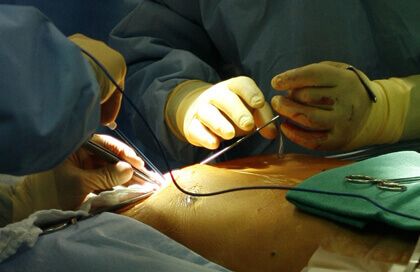According to previous studies, patients receiving bilateral internal mammary artery conduits during coronary artery bypass grafting have better survival than those receiving a single internal mammary artery. The reason behind this remains unclear, let alone whether there really is lower repeat revascularization rate.
This analysis compared timing, frequency, and type of repeat coronary revascularization among patients receiving single vs. bilateral internal mammary artery conduits.
Read also: “Myocardial Revascularization Surgery: One or Two Internal-Thoracic-Artery Grafts?”.
The study included 47,984 consecutive patients undergoing bypass revascularization surgery in 7 centers between 1992 and 2014. 1,482 of these patients received bilateral internal mammary artery conduits.
To compare them, patients were propensity matched, which left 1,297 patients in each branch (bilateral vs. single internal mammary artery) for final analyzis. Primary end point was freedom from repeat revascularization.
Read also: “Additional Benefit from Radial Artery Graft in Myocardial Revascularization Surgery”.
After a 13.2 year follow up, well matched by age, comorbidities, ventricular function, etc., patients showed that bilateral internal mammary artery conduits are associated with higher freedom from revascularization, compared against single mammary artery conduits (HR= 0.78, CI 95%, 0.65 to 0.94; p=0.009). 19.4% (n=252) of patients in the single mammary artery branch required repeat revascularization at follow up vs. 15.1% (n=196) of patients with bilateral mammary artery conduits (p=0.004).
The vast majority of revascularization procedures were PCIs for both groups, the most frequently intervened being the right coronary and the circumflex.
In addition, bilateral internal mammary artery conduits were associated with a reduction in all-cause mortality at 12 years (HR, 0.79; p=0.001) and there was no increase in inhospital mortality rate.
Conclusion
Bilateral mammary artery conduits were associated with a reduction in repeat revascularization rate and better survival rate at long term, which is why it should be considered more frequently in myocardial revascularization surgery.
Editorial Comment
The NEJM has recently published the 5 year ART trial follow up, which randomized CABG patients to bilateral vs. single internal mammary artery grafts. This study, the largest on this matter, was not able to show differences at 5 years, though outcomes at 10 years remain pending. There was increased morbidity among patients receiving bilateral internal mammary artery grafts (sternal infections and need of sternal reconstruction).
Original title: Does Use of Bilateral Internal Mammary Artery Grafting Reduce Long-Term Risk of Repeat Coronary Revascularization? A Multicenter Analysis.
Reference: Alexander Iribarne et al. Circulation. 2017;136:1676–1685.
Subscribe to our weekly newsletter
Get the latest scientific articles on interventional cardiology
We are interested in your opinion. Please, leave your comments, thoughts, questions, etc., below. They will be most welcome.






